In addition to the flagship models that grab most of the media attention, each camera company has its own range of entry-level cameras which, in the case of Fujifilm, it is the X-A series. The latest iteration is the X-A3, which comes nearly two years after the X-A2, albeit at a slightly higher price point.
In this comparison preview, we’re going to explore all the main differences between the new model and its predecessor. As always, if we get the chance to test the two cameras side-by-side, we will post a full comparison with high resolution image samples as soon as possible.
Ethics statement: The information supplied in this article is based on official specifications, press releases and our personal experience with Fujifilm cameras. If we get the chance to test the two cameras side-by-side, we will publish a full comparison with high resolution image samples. We were not asked to write anything about these cameras, nor were we provided any compensation of any kind. Within the article, there are affiliate links. If you decided to buy something after clicking the link, we will receive a small commission. To know more about our ethics, you can visit our full disclosure page. Thank you!
1. New Sensor
Up until recently, most Fujifilm X series cameras featured a 16MP APS-C sensor, including the X-A2. The X-A3 is the first entry-level Fujifilm camera to host a sensor with an increased resolution of 24MP, making it the third Fujifilm camera along with the X-Pro2 and X-T2 to have this resolution.
Why is this extra resolution useful? Because it provides better definition and clarity and also gives you more leeway to crop your images in post-production.
Both cameras have a native ISO sensitivity range of 200 to 6400 and can be expanded to 100, 12800 and 25600 ISO.
Note: the X-A1, X-A2 and X-A3 are the only Fujifilm X series cameras to use a traditional Bayer-type sensor. By contrast, all other X-series cameras have an X-Trans type sensor.
2. Enhanced Autofocus
Both cameras use an older version of Fujifilm’s autofocus system which is TTL contrast based with 49 areas. The main difference is that the X-A3 has three different AF modes – Single Point, Zone and Wide/Tracking – that can be used in combination with either AF-S (single) or AF-C (continuous), while the X-A2 only has Area AF and Multi-Target Auto Area AF options.
The X-A3 also incorporates a new focus switching lever on the front to let you instantaneously switch between S-AF (single), C-AF (continuous) and MF (manual).
3. New Touch-Sensitive Tilting LCD Monitor
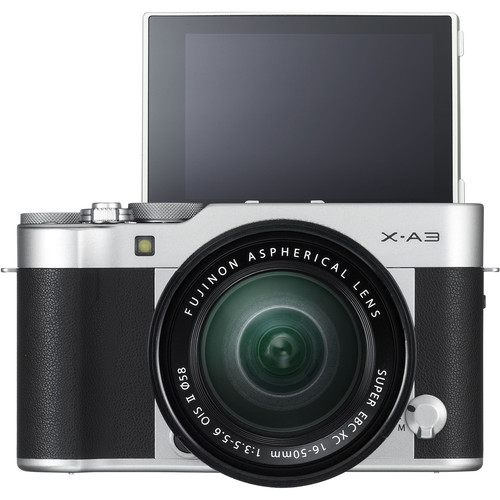
The X-A3 becomes the second Fujifilm camera after the X70 to feature a touch sensitive LCD monitor. You can use the screen to select your autofocus point, take a shot, or digitally zoom in and out by pinching your fingers, just as you would with a smartphone. The digital zoom mechanism works with prime lenses too, meaning that the sensor is cropped when you take a picture. The X-A2’s screen, on the other hand, lacks all touch sensitivity.
Both screens employ a tilting mechanism but that of the X-A3 is a little more versatile, tilting up 180° as opposed to 175° on the X-A2. It also has more resolution – 1,040K versus 920K dots to be precise.
When tilted up, both screens activate a “selfie mode” with Eye detection autofocus that automatically focuses on the eyes and a Portrait Enhancer mode that makes your skin looks brighter and smoother. On the X-A3 you can use the rear vertical command dial to take a shot which is more comfortable when holding the camera in selfie mode.
4. New Self Timer Modes
Both cameras come with a self timer with a 2 or 10 second delay. However, only the X-A3 features three brand new modes to make it even easier to take selfies: Smile Detection, Buddy Timer and Group Timer.
The first automatically activates the shutter release when you smile, the second triggers when two people come close together, and the third only works when a specified number of people enter the frame.
5. More Film Simulation Modes / Creative Advanced Filters
The X-A3 has been given eleven of Fujifilm’s colour profiles, otherwise known as Film Simulation Modes, while the X-A2 only has six. In addition to Provia, Velvia, Astia, Classic Chrome, Monochrome and Sepia, the X-A3 also features Pro Neg Hi, Pro Neg Standard, Monochrome+Ye, Monochrome+R, and Monochrome+G.
The X-A3 also has more Creative Advanced Filters. While both have Toy camera, Miniature, Pop color, High-key, Low-key, Dynamic tone, Soft focus and Partial color, only the X-A3 has Fish eye and Cross screen.
6. Electronic Shutter
An important addition to the X-A3 is the electronic shutter that works between 1 second and 1/32000 of a second. It joins the mechanical shutter found on both the X-A2 and X-A3 whose speed ranges from 30 seconds to 1/4000 of a second.
Electronic shutters are useful because they render the camera completely silent, eliminate image blur caused by shutter vibration, and make it possible to take pictures at fast apertures in very bright sunlight. However, they can produce rolling shutter distortion, which means they aren’t as effective for fast-moving subjects.
7. Improved Movie Mode with Electronic Image Stabilisation
The X-A3 comes with a more advanced movie mode than the X-A2. Although both shoot at a maximum of Full HD (1920 x 1080), the X-A2 is limited to 30p while the X-A3 has 60p, 50p and 24p options. Both have a maximum recording time of 14 minutes in Full HD.
Another interesting addition to the X-A3 is the electronic image stabilisation function that works with the optical stabilisation of the lens to provide 5-axis image stabilisation for video work. This combination of electronic and optical stabilisation reduces camera shake in hand-held footage.
8. Updated Design
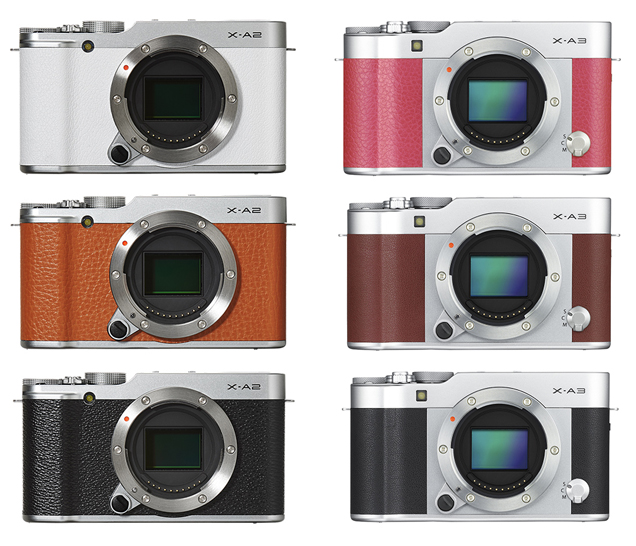
A smaller difference can be found in the design of the two cameras. Although both have a retro appearance, the X-A3 bears a fairly strong resemblance to Fujifilm’s very popular range of Instax cameras. Surrounding the mount is a square aluminium plate that is flanked by an updated faux leather covering available in brown, silver or pink. The dials, front plate and top cover are all made of aluminium.
The X-A2’s faux leather covering has a different texture and comes in white, silver and brown. The position of the various dials and buttons is more or less identical on both cameras with the exception of the flash button which has been moved from the rear on the X-A2 to the side on the X-A3, and the aforementioned focus switching lever.
9. Extra Photography Functions
Beyond what we’ve already covered, the X-A3 comes with a plethora of extra photography functions that either aren’t as advanced or simply aren’t found on the X-A2. The most interesting include:
- Interval timer shooting – The camera automatically releases the shutter at pre-selected intervals. Good for time-lapses.
- Motion panorama – The camera automatically stitches together multiple images to create a 360° panoramic shots.
- ISO auto control – Set a default ISO sensitivity, maximum ISO sensitivity and a minimum shutter speed. If the camera feels your default ISO value isn’t high enough, it will automatically raise it but not beyond the maximum sensitivity you’ve dictated.
- +/-3 exposure compensation – Increase or decrease your exposure when in shutter or aperture priority mode. Was only +/-2 on the X-A2.
- Customisable Q menu – You can now customise the quick menu to feature your favourite settings.
10. Charging the battery
Unlike the X-A2 whose battery must be charged using a dedicated battery charger, the X-A3 can be charged with the supplied USB cable from an AC adapter or computer.
Conclusion
Though we will have to test both cameras side-by-side to come to a definitive conclusion, the specifications do seem to suggest that the differences between the X-A2 and X-A3 are subtle. Personally speaking, the only features that would have me lean towards the X-A3 are the extra resolution of the sensor and the presence of an electronic shutter.
The new X-A3 will be available in October 2016 at the retail price of $599 with the 16-50mm kit lens. The X-A2 has been discontinued but you can still find it second-hand.
Check price of the Fujifilm X-A3 on
Amazon | Amazon UK | eBay | B&H Photo
Check price of Fujifilm X-A2 on


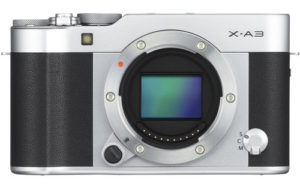
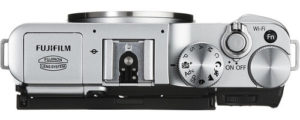
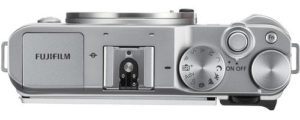
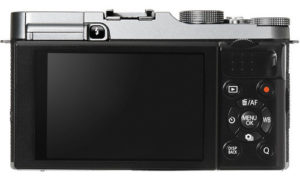
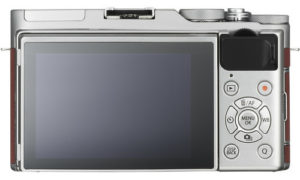
Are you serious $600 for not having a phase detect autofocus?
it’s 2016! Fuji wakeup!
This is #bullcrap
Seriously? no PDAF? it’s 2016!
Mi chiedo: l’eliminazione del Bayer è stato il cavallo di battaglia di Fuji, e adesso? Non più.Ed il lettore cosa deve pensare di questa spensierata quanto stravagante giravolta? Chissà. Forse alla Fuji si saranno accorti che non è più quella panacea tanto strombazzata agli inizi, ed allora, oplààà. Una bella piroetta e tutto va a posto.
La serie A ha sempre avuto il sensore Bayer. Non sono sicuro sul motivo di questa scelta. Una possibile risposta può essere: il sensor Bayer da 24MP è già disponibile sul mercato da tempo e ha probabilmente un costo inferiore rispetto all’X-Trans che Sony produce esclusivamente per Fuji.